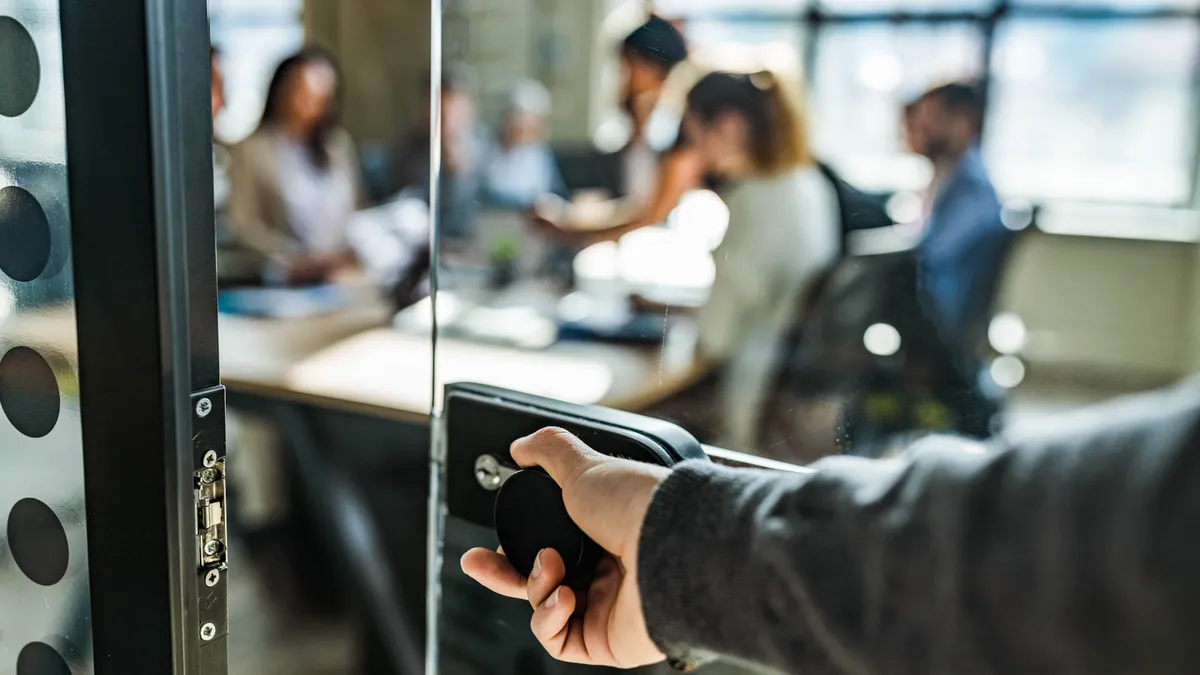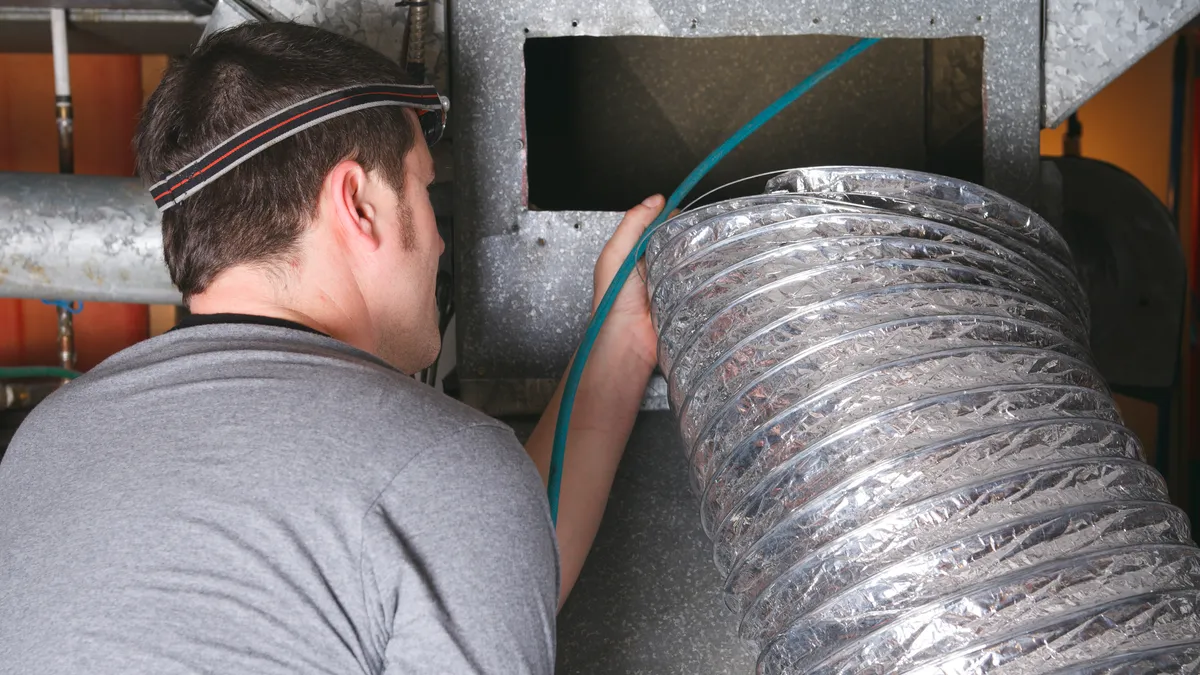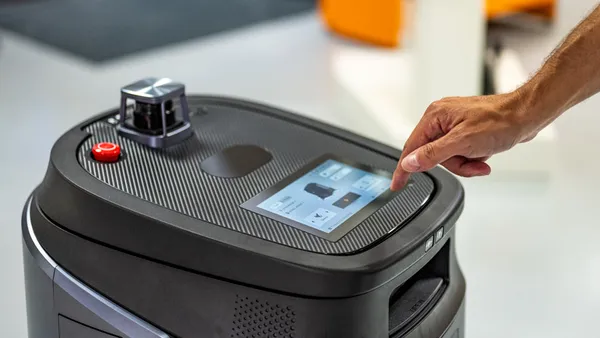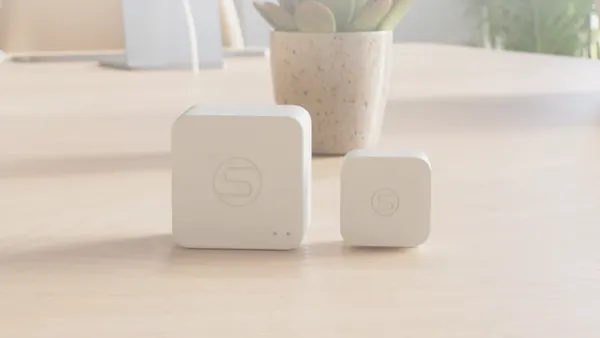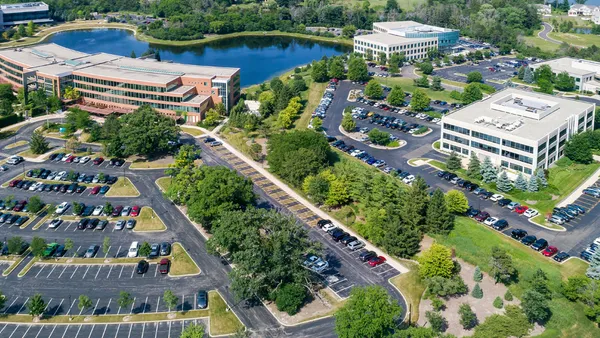Dive Brief:
- Envoy is rolling out five capabilities for its integrated workplace platform to streamline security and safety efforts for employees and visitors.
- These new capabilities include emergency notifications; a static QR code aimed at streamlining secure registration on high-traffic days; a virtual front desk; biometric data-enabled facial recognition; and a ‘passive presence capture’ feature that collects Wi-Fi and door data to remove the need for manual desk or app check-ins, Envoy said in a news release.
- These features will modernize security, safety and compliance requirements and offer protection from financial and reputational risks, including fines, lawsuits and breaches, the company said.
Dive Insight:
As hybrid work models continue to dominate the office market, more businesses are pressing for in-office attendance from employees. Ninety-one percent of workforces have resumed on-site work for at least some portion of the workweek, Envoy said in its release, citing its “Future of Work” report set to release this month.
That trend is pushing companies to rely on a single system to manage access, operations and safety communications across all their locations, with nearly half of physical security leaders reporting difficulties with maintaining consistent security, safety and compliance standards as they try to cut costs across various sites, Envoy said.
“The way companies are utilizing office space today is more complex than we've seen before — in-office attendance varies, employees are traveling between multiple office locations, you have to consider vendors and deliveries — securing our spaces has gotten trickier," Envoy Founder and CEO Larry Gadea said in the release.
Businesses are also being prompted to reevaluate their approaches to physical security and safety across facilities, buildings and dispersed geographical locations, while contending with resourcing problems and inadequate staffing, Envoy said in the release.
Envoy’s new capabilities intend to provide one system for businesses to manage access, operations and safety across multiple locations. A virtual front-desk capability, available for beta testing, enables self-service visitor reception across multiple locations, cutting down the number of dedicated staff members needed. The new static QR code lets visitors self-serve the sign-in process on their mobile phones, eliminating the need for company-owned tablets.
The other three features aim to improve security and expedite workplace processes. The first of these is an emergency notification system that has now been expanded to include visitors, rather than just employees, to provide immediate alerts during a safety or emergency incident. As part of this feature, individuals can mark themselves as “safe” to more easily discern who may need assistance.
The second is a facial-recognition tool that speeds up the process of check-ins, while maintaining security protocols through biometric verification.
And the passive presence capture feature mitigates reporting errors by consolidating reliable occupancy data from integrated systems, spanning door access, Wi-Fi and other systems, to help organizations gain visibility into occupancy patterns and make critical decisions about real-estate costs, staffing, and resourcing decisions,” Envoy said.


